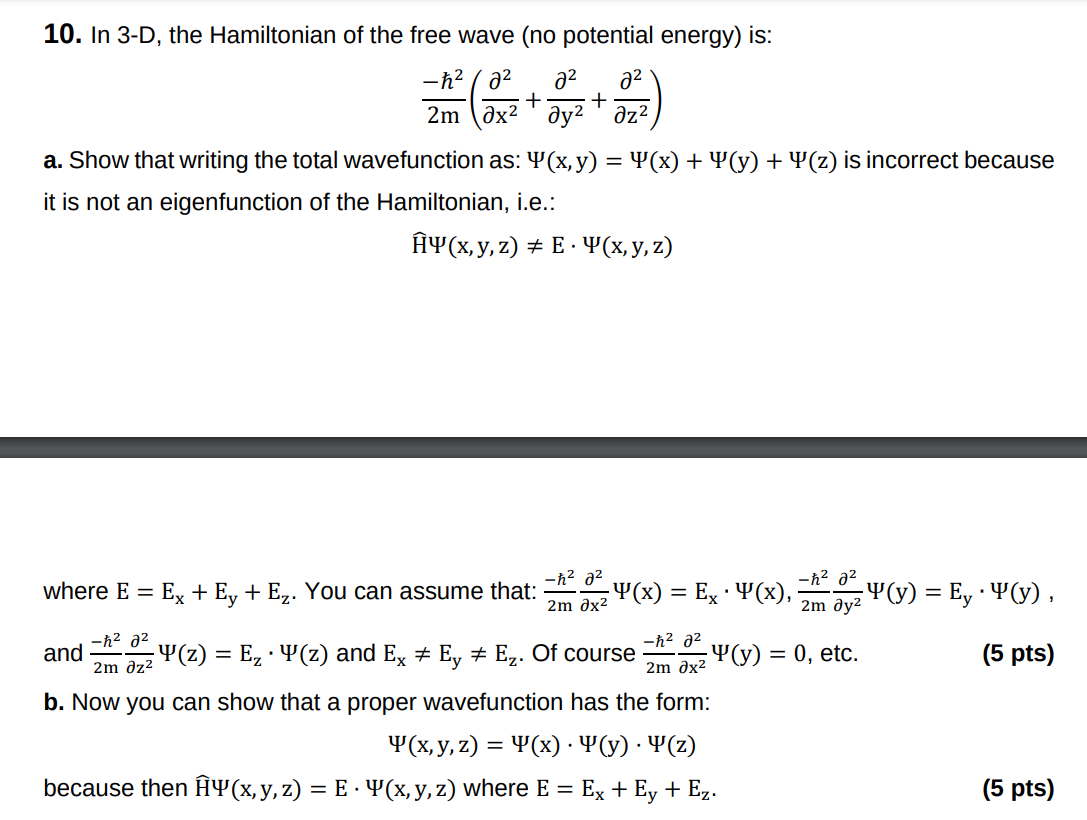Answered step by step
Verified Expert Solution
Question
1 Approved Answer
10. In 3-D, the Hamiltonian of the free wave (no potential energy) is: 2m2(x22+y22+z22) a. Show that writing the total wavefunction as: (x,y)=(x)+(y)+(z) is incorrect

Step by Step Solution
There are 3 Steps involved in it
Step: 1

Get Instant Access to Expert-Tailored Solutions
See step-by-step solutions with expert insights and AI powered tools for academic success
Step: 2

Step: 3

Ace Your Homework with AI
Get the answers you need in no time with our AI-driven, step-by-step assistance
Get Started


